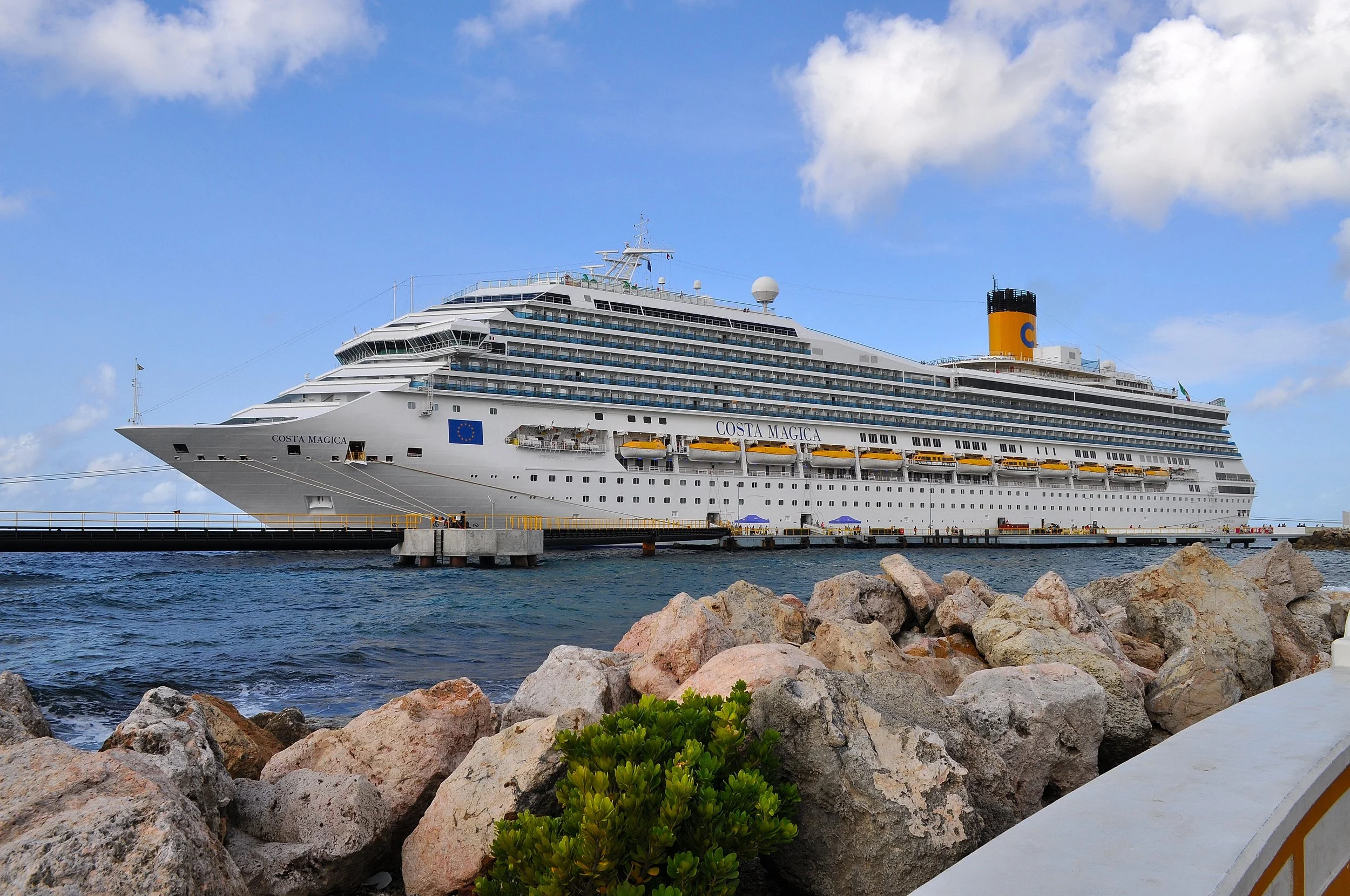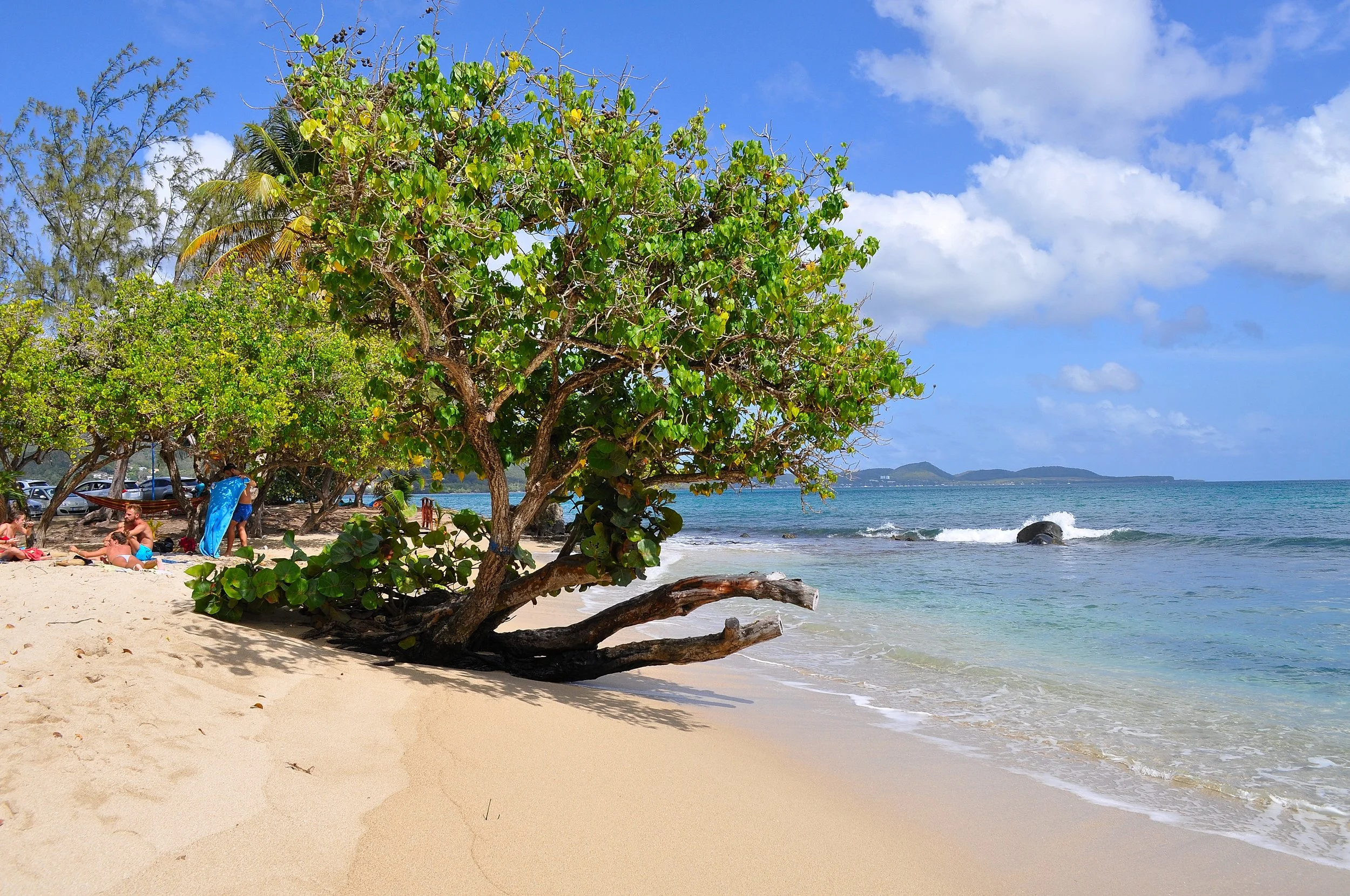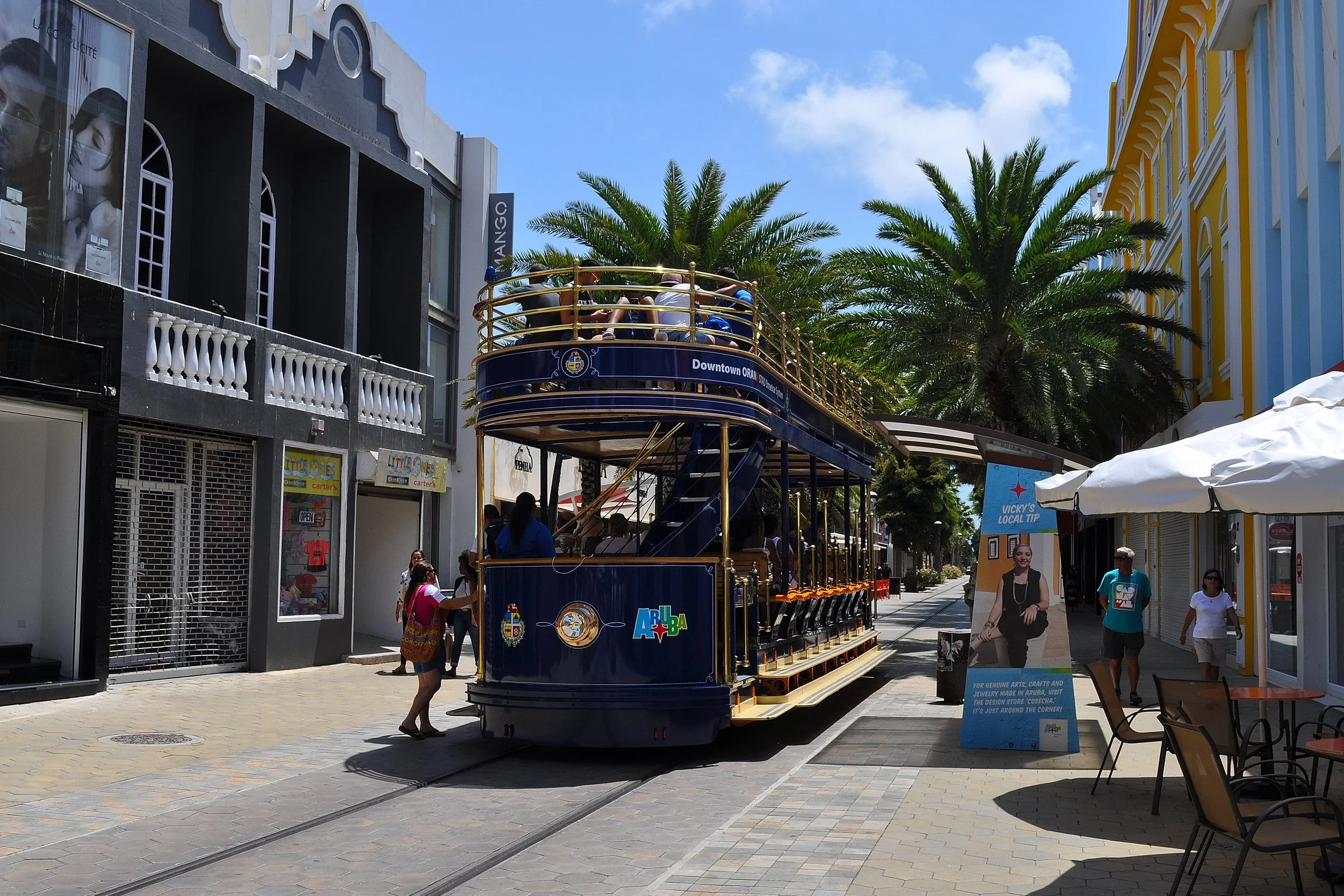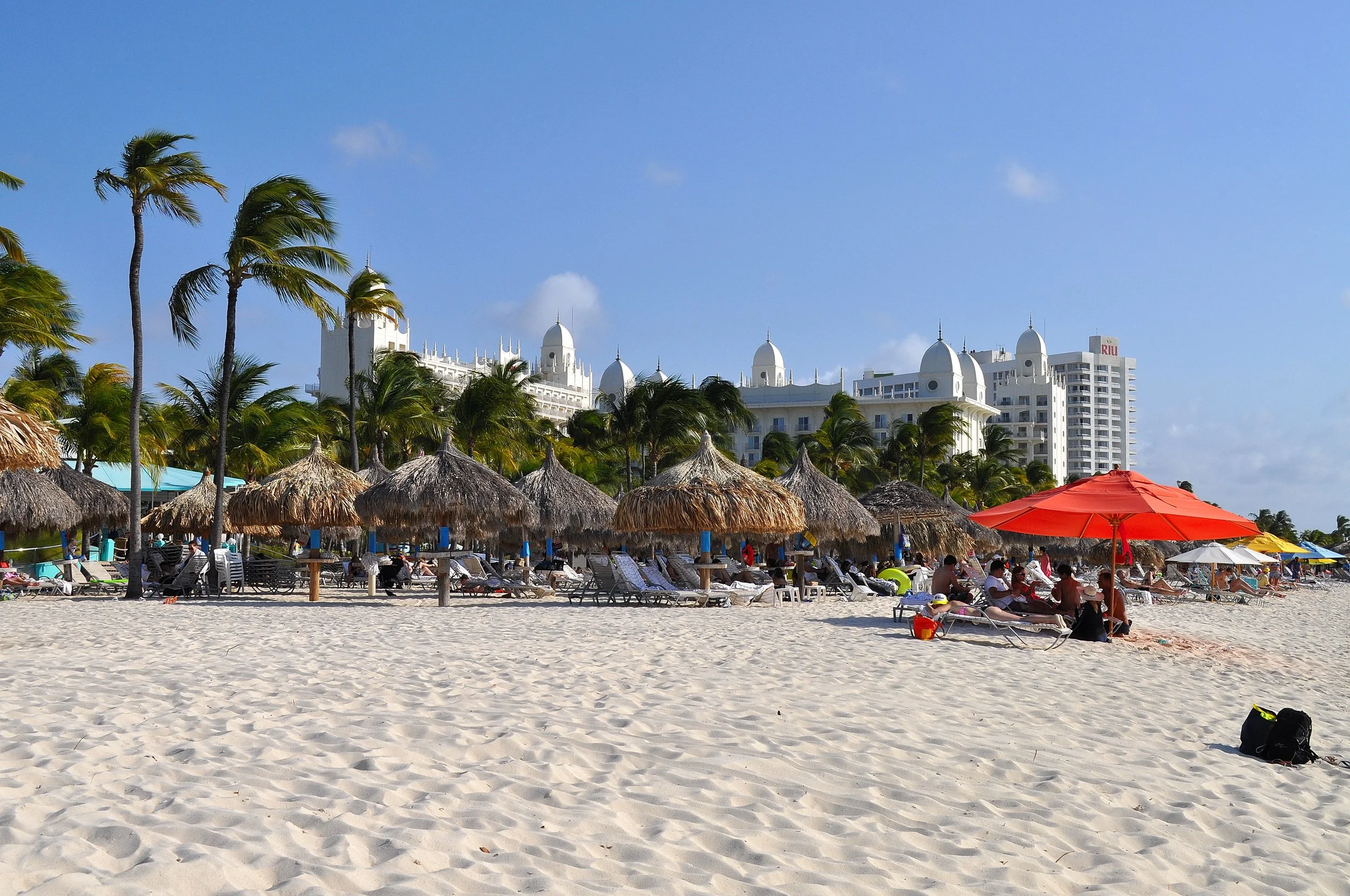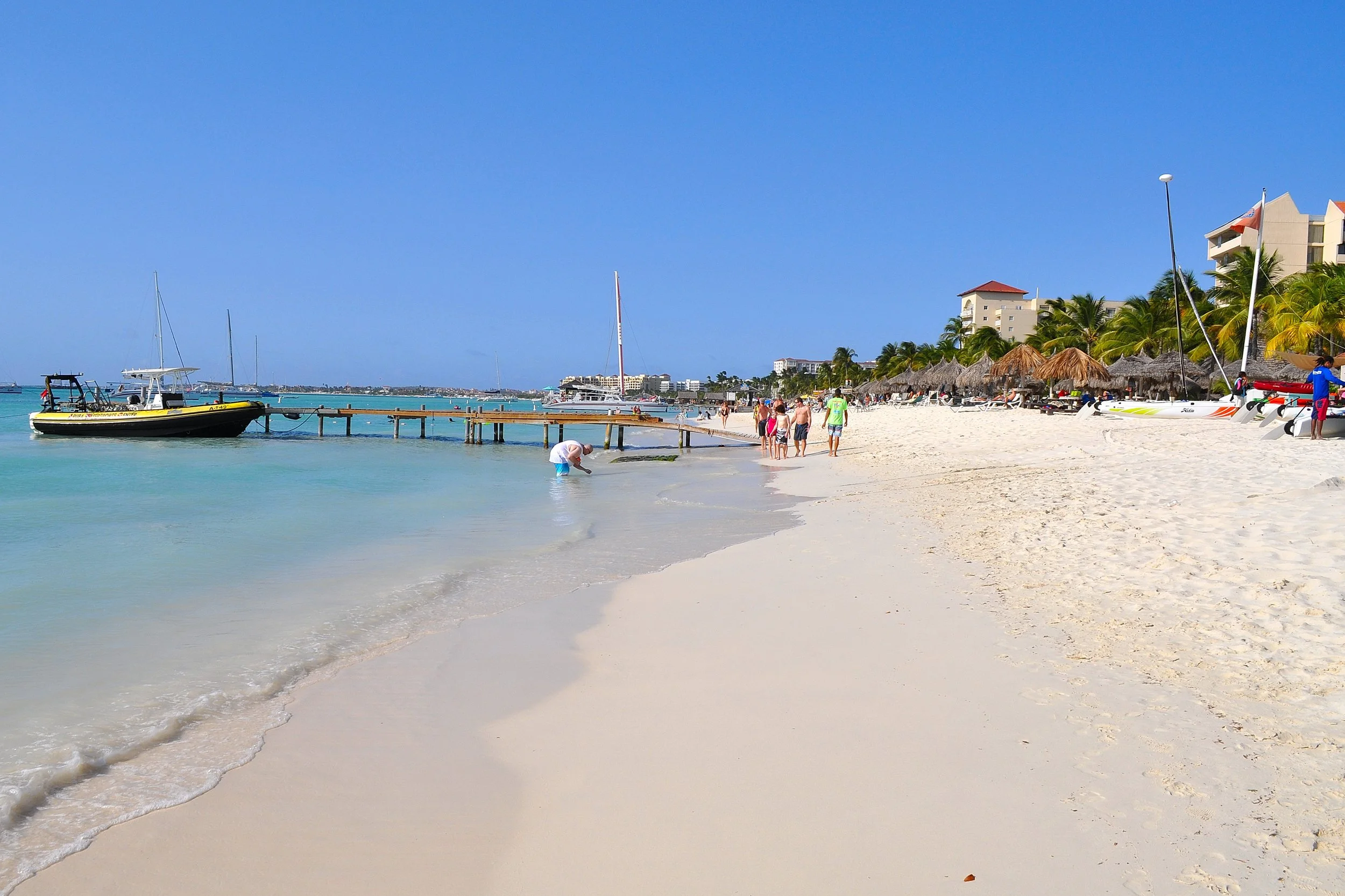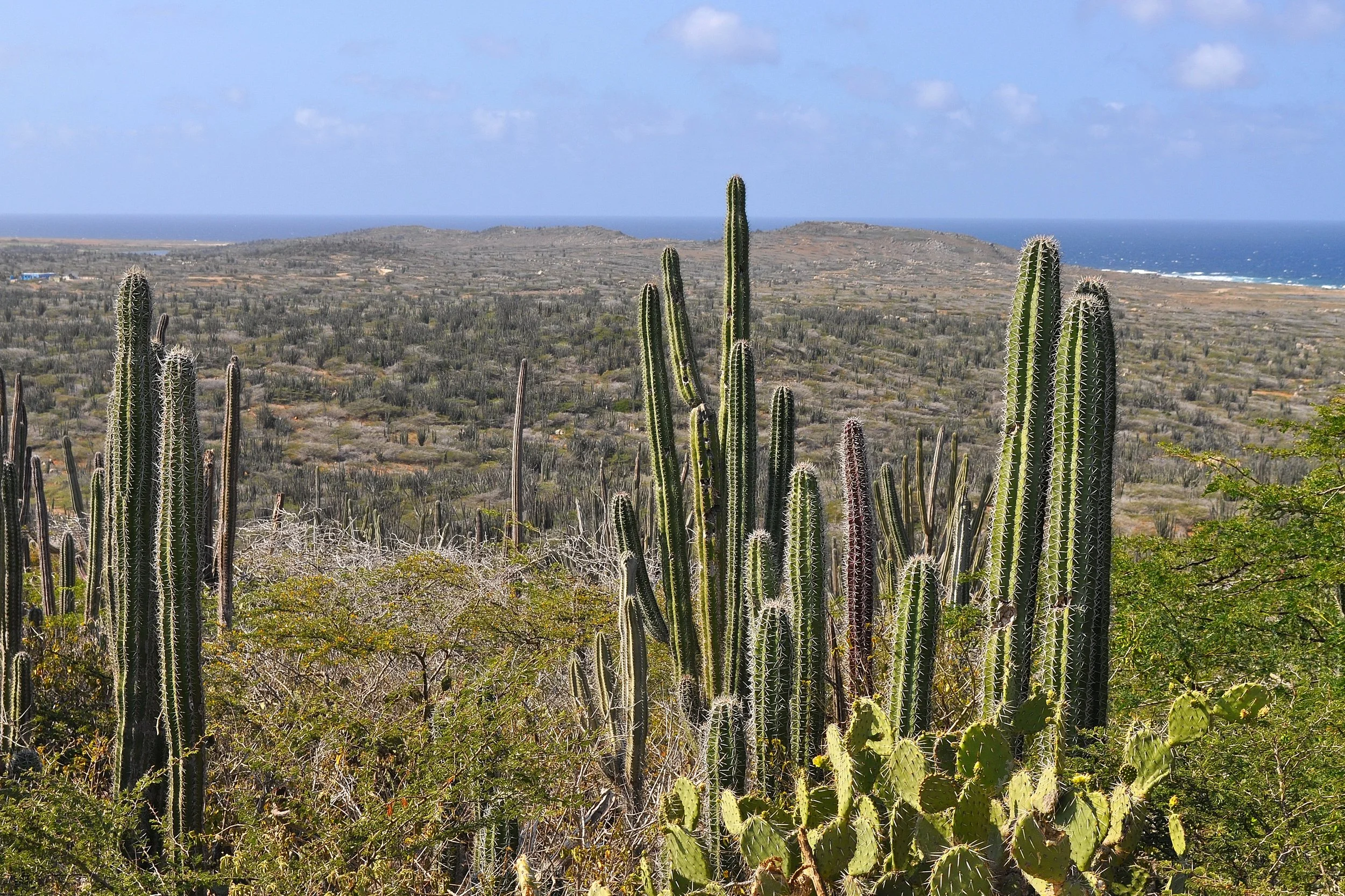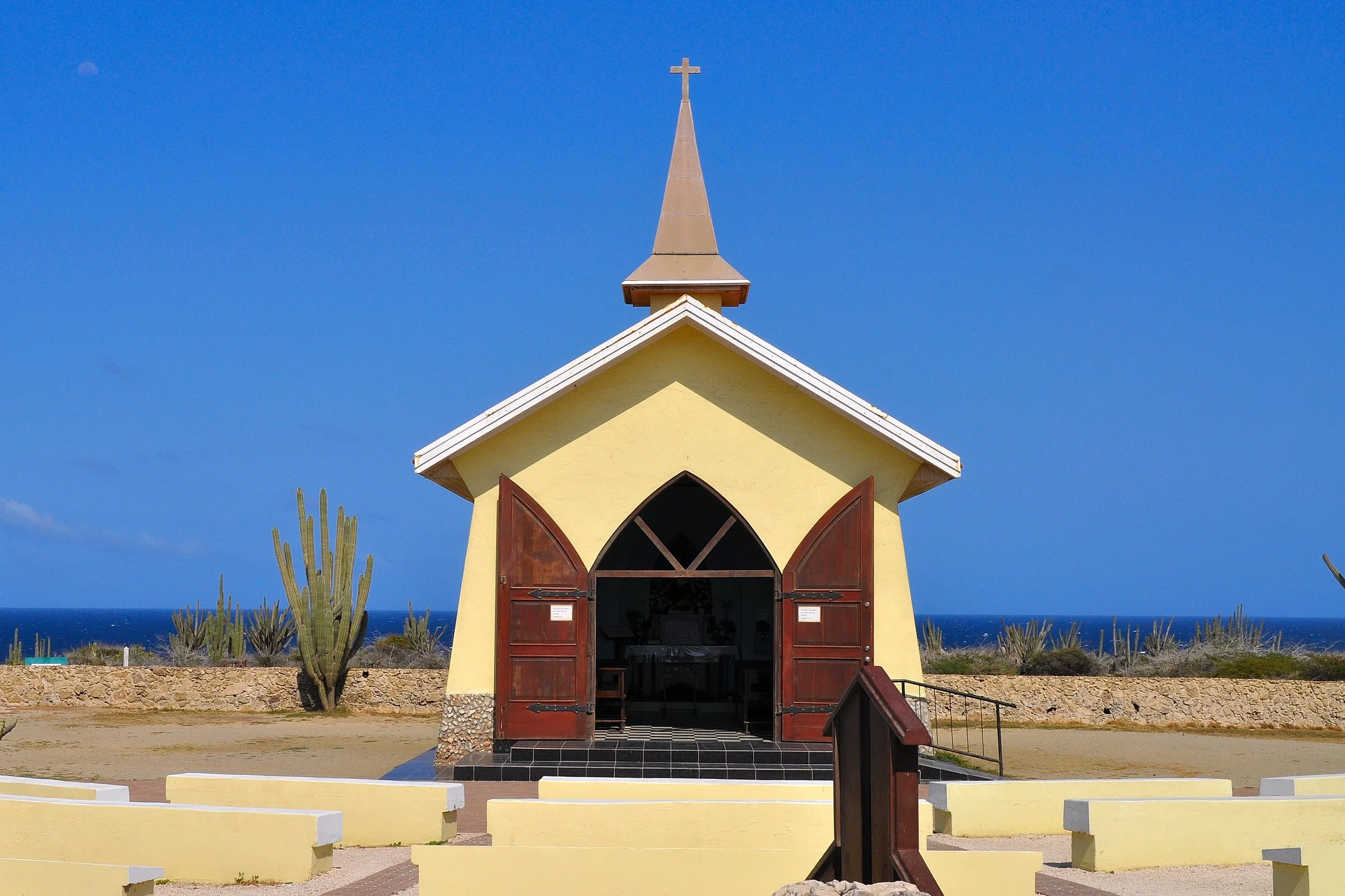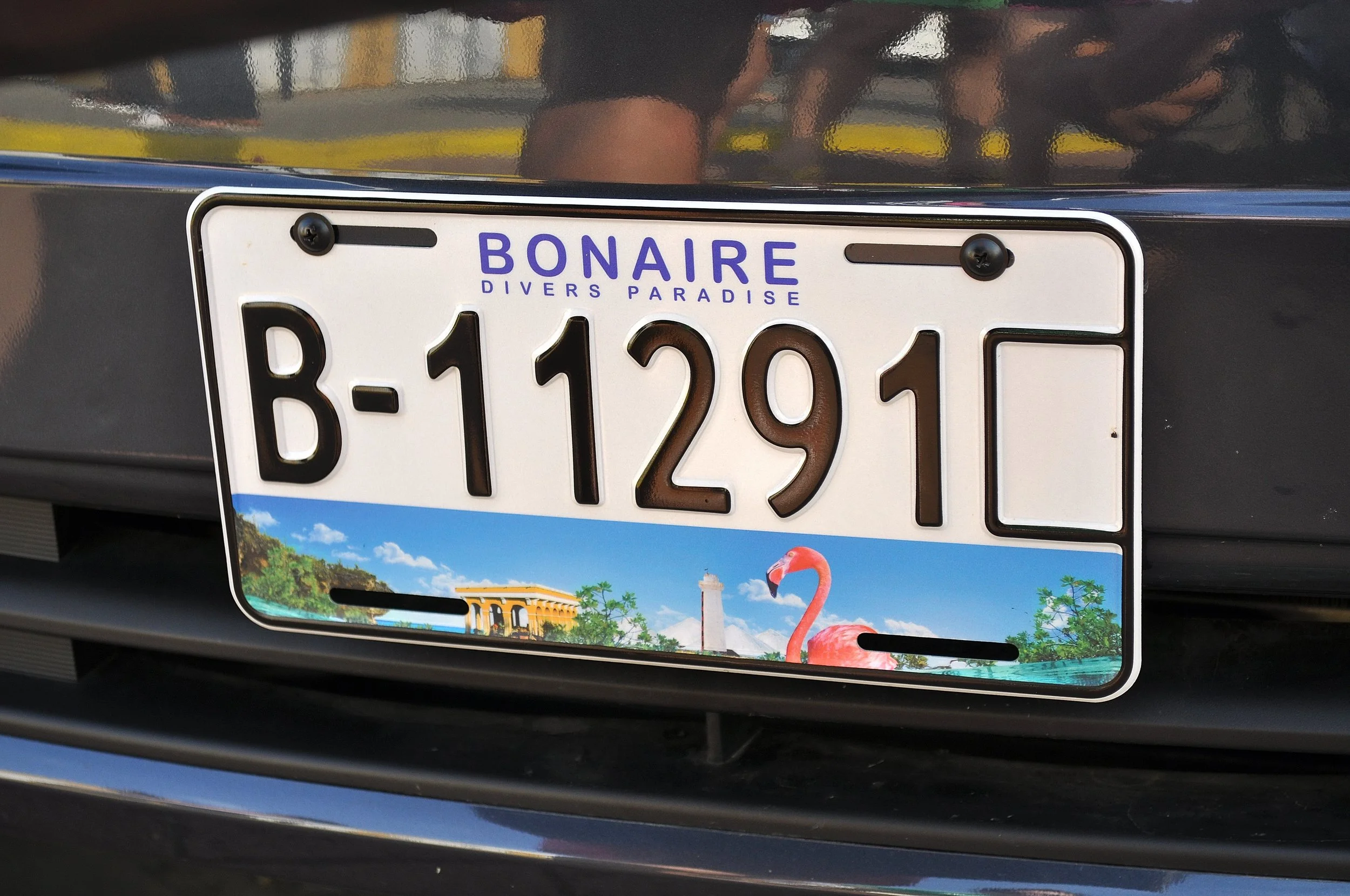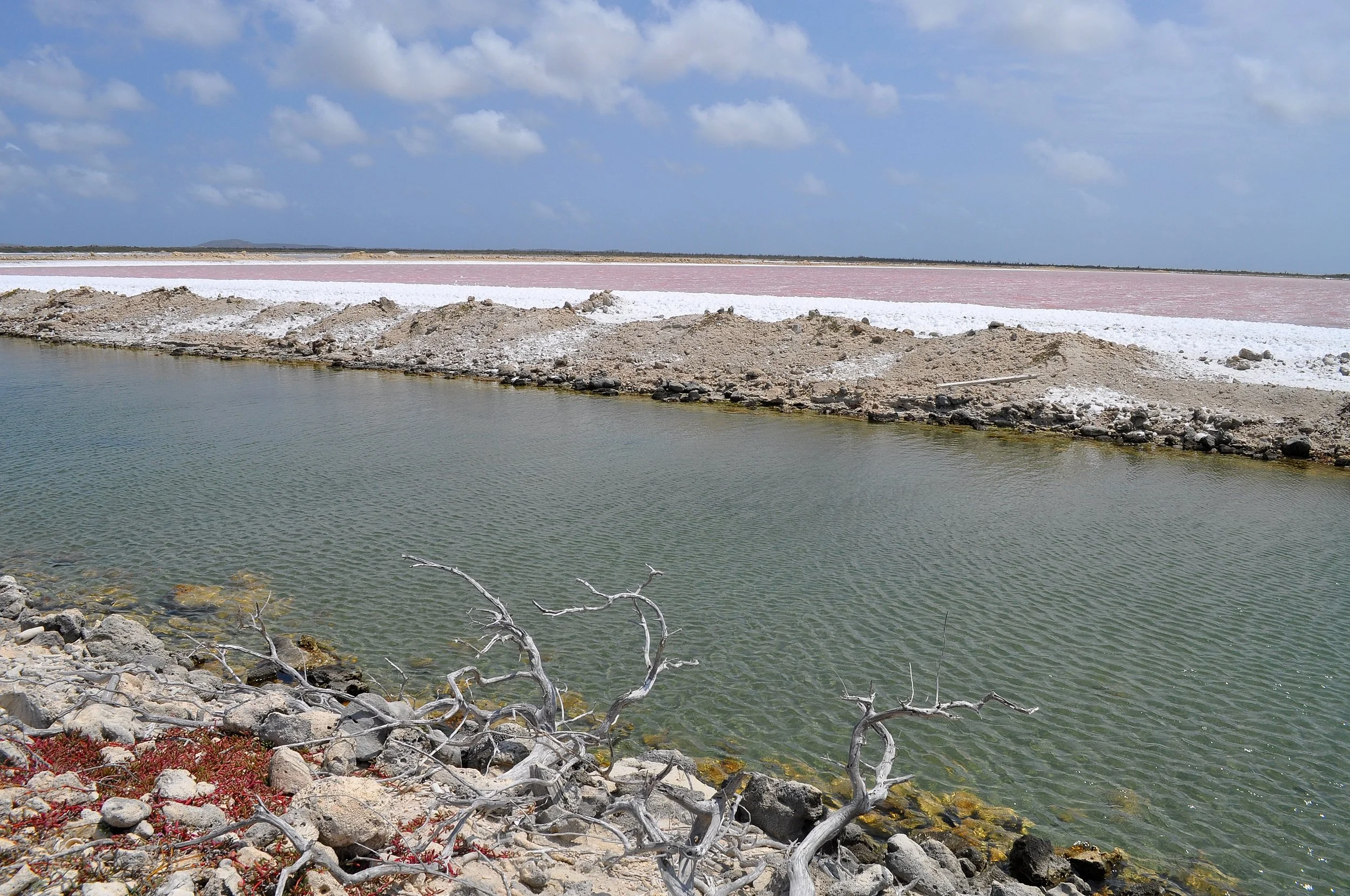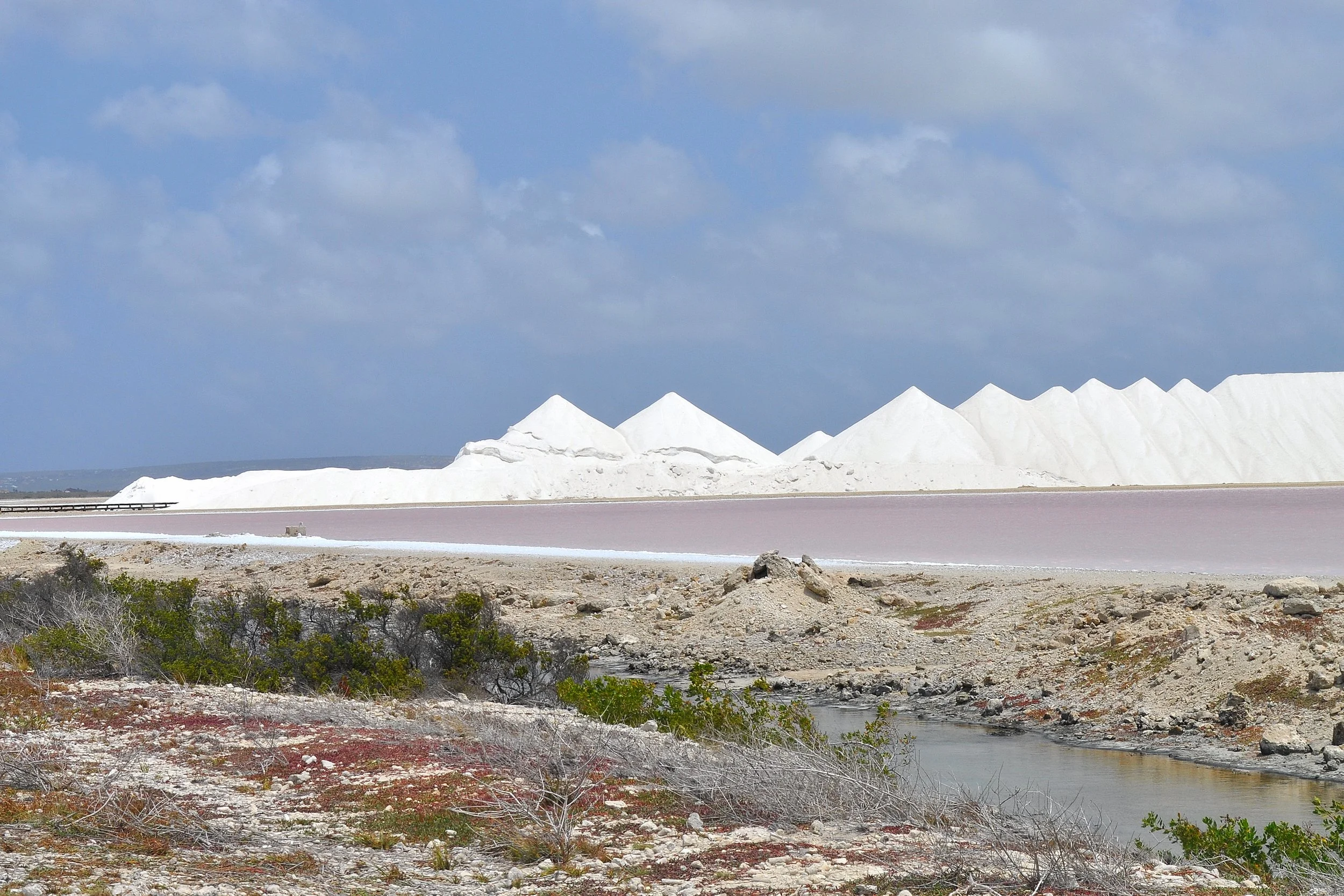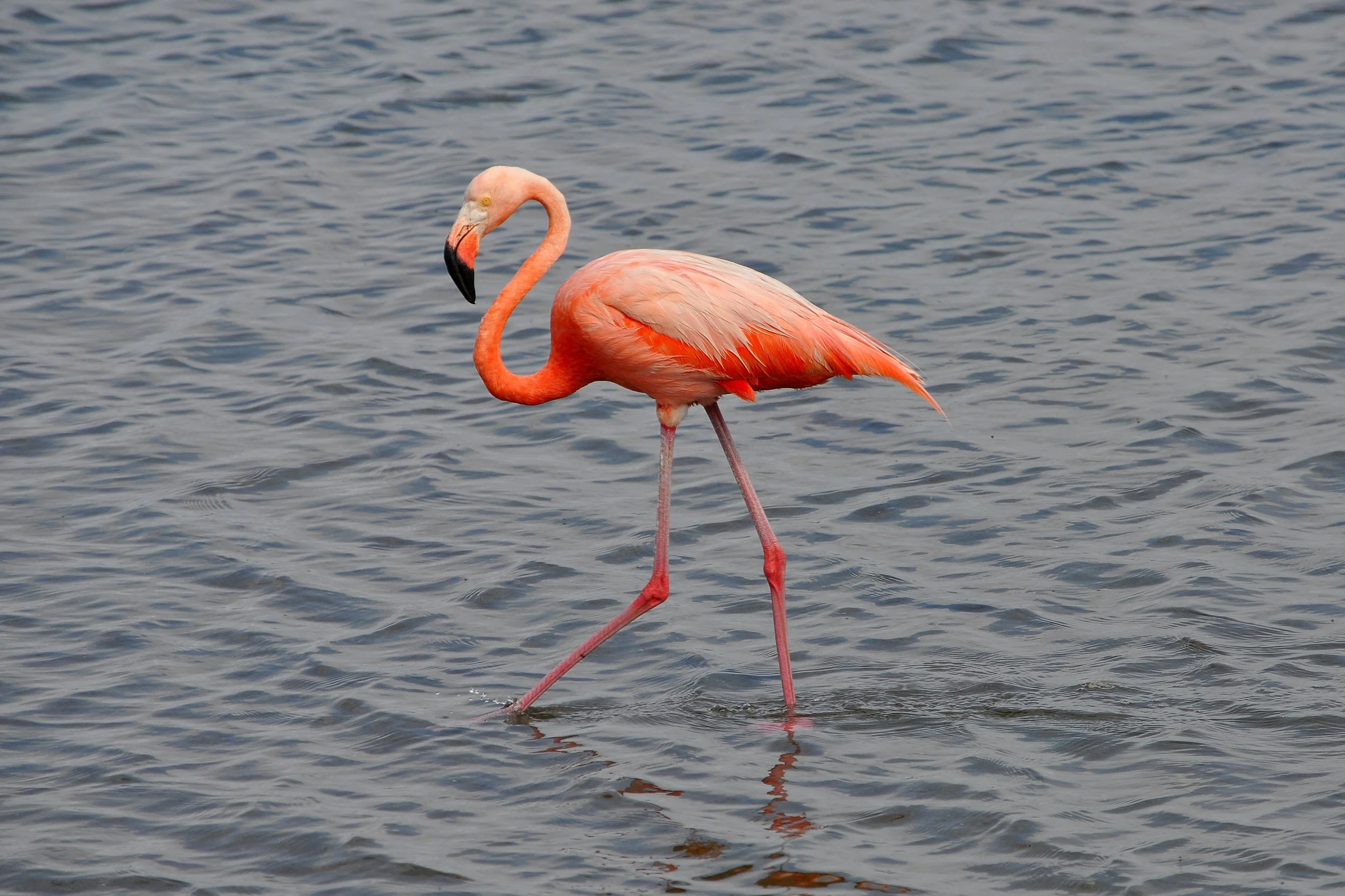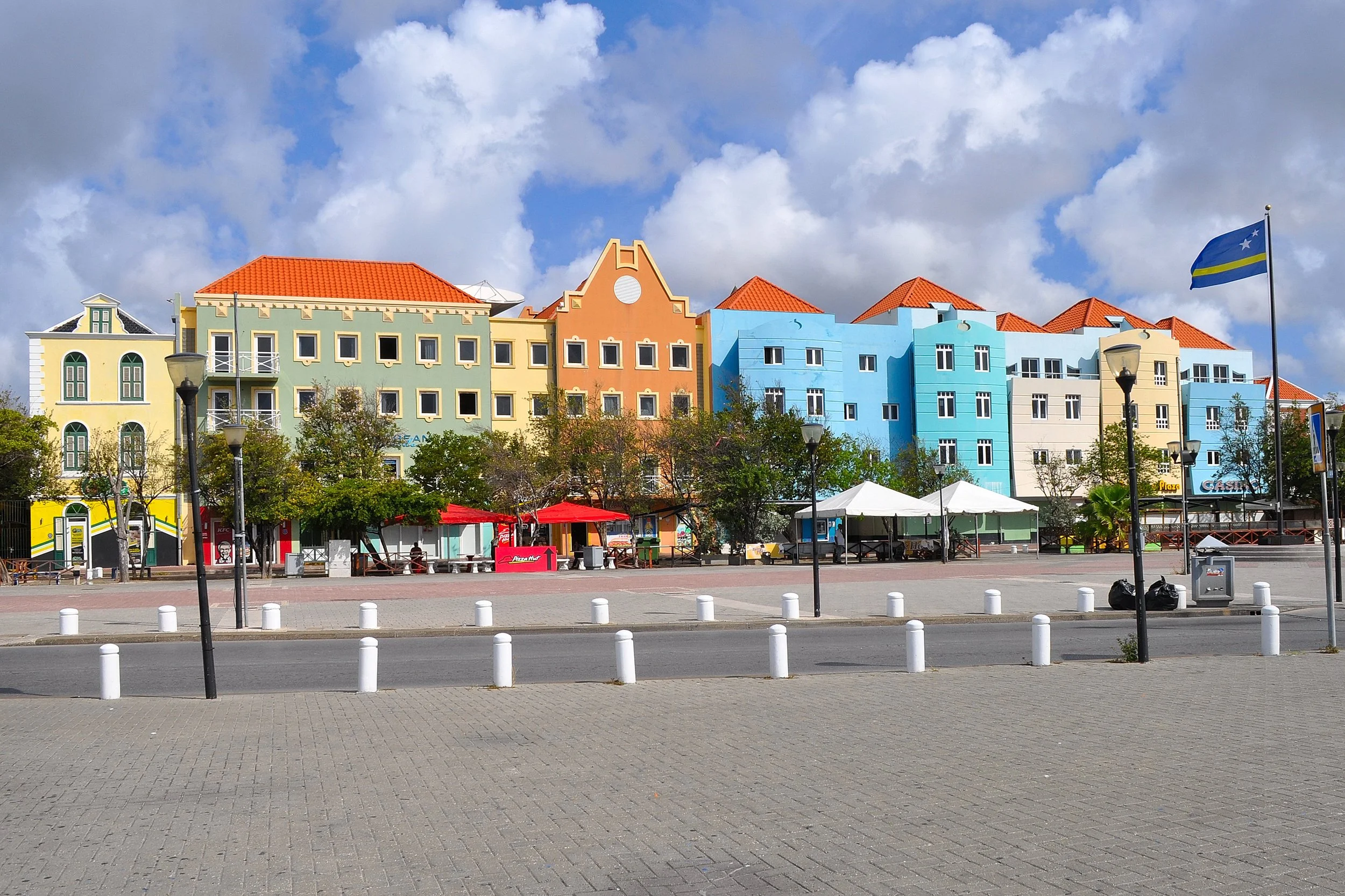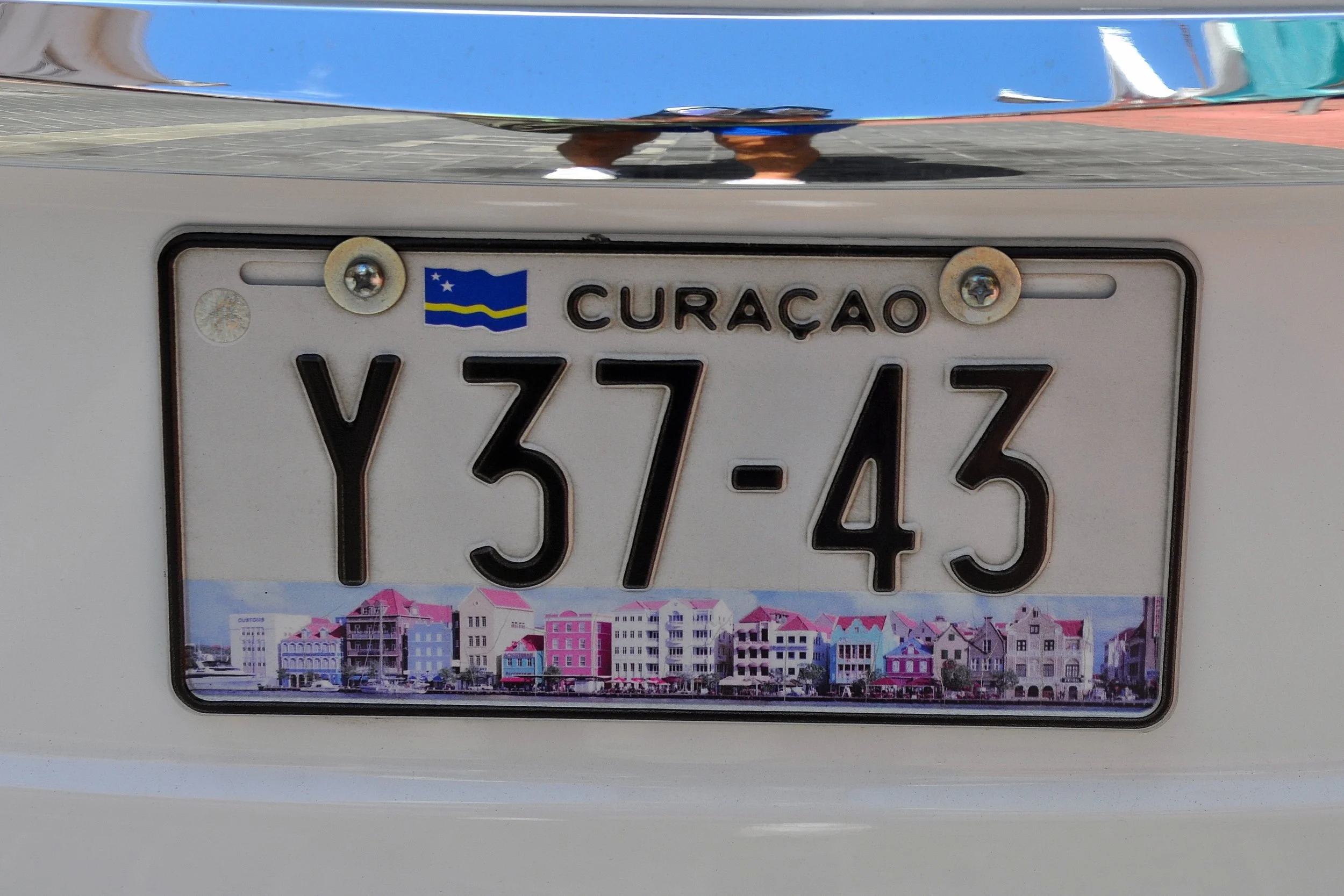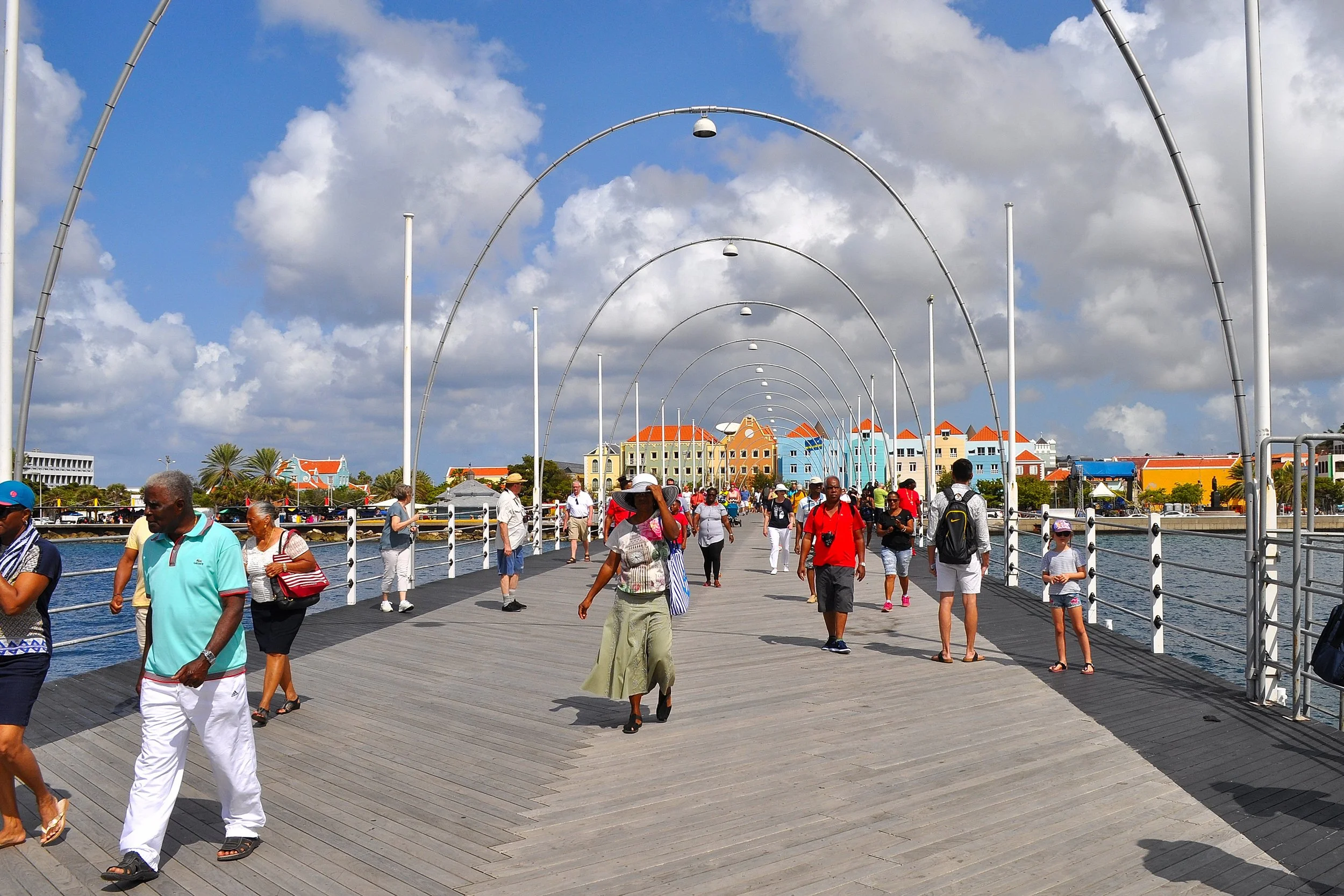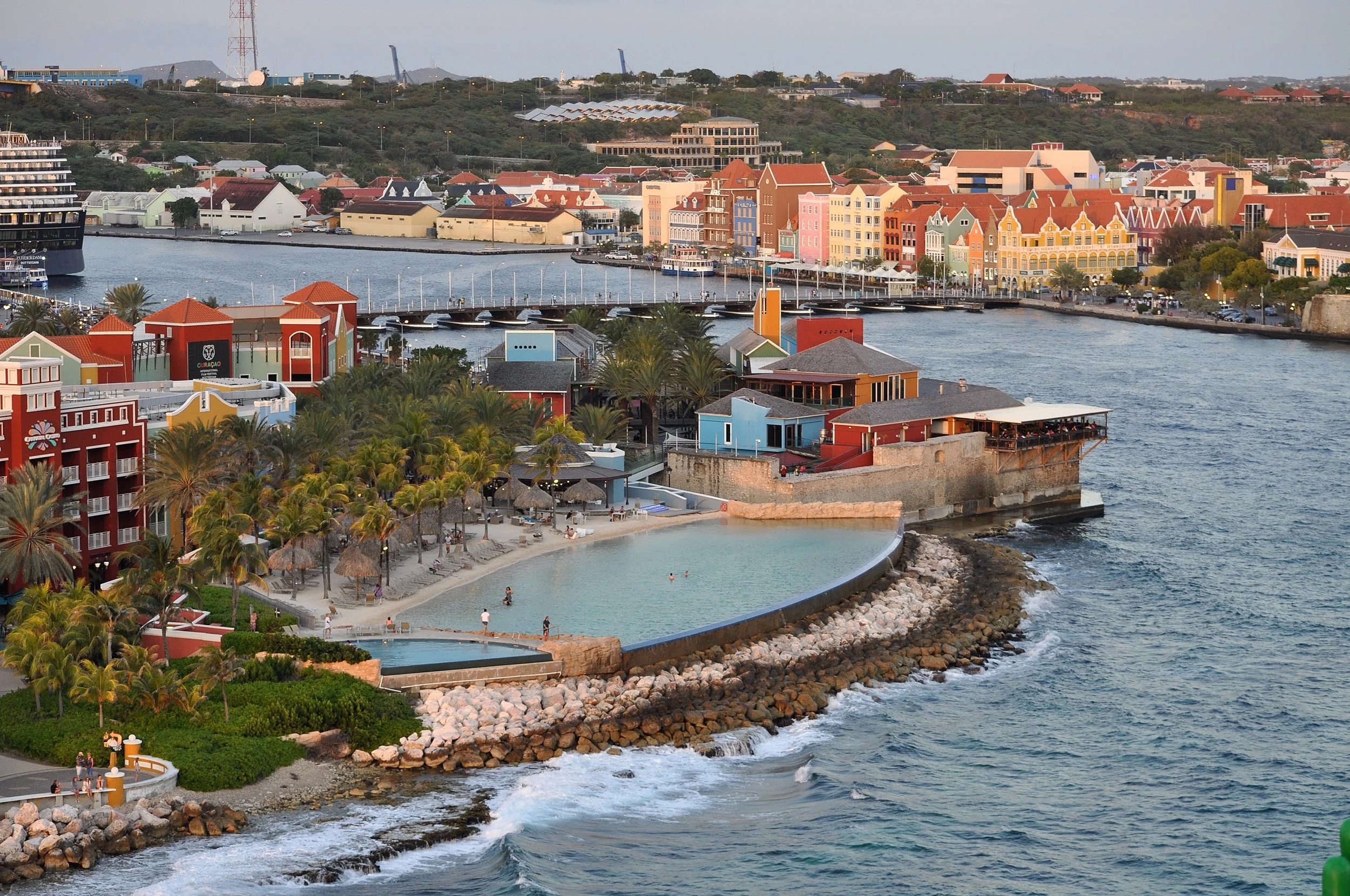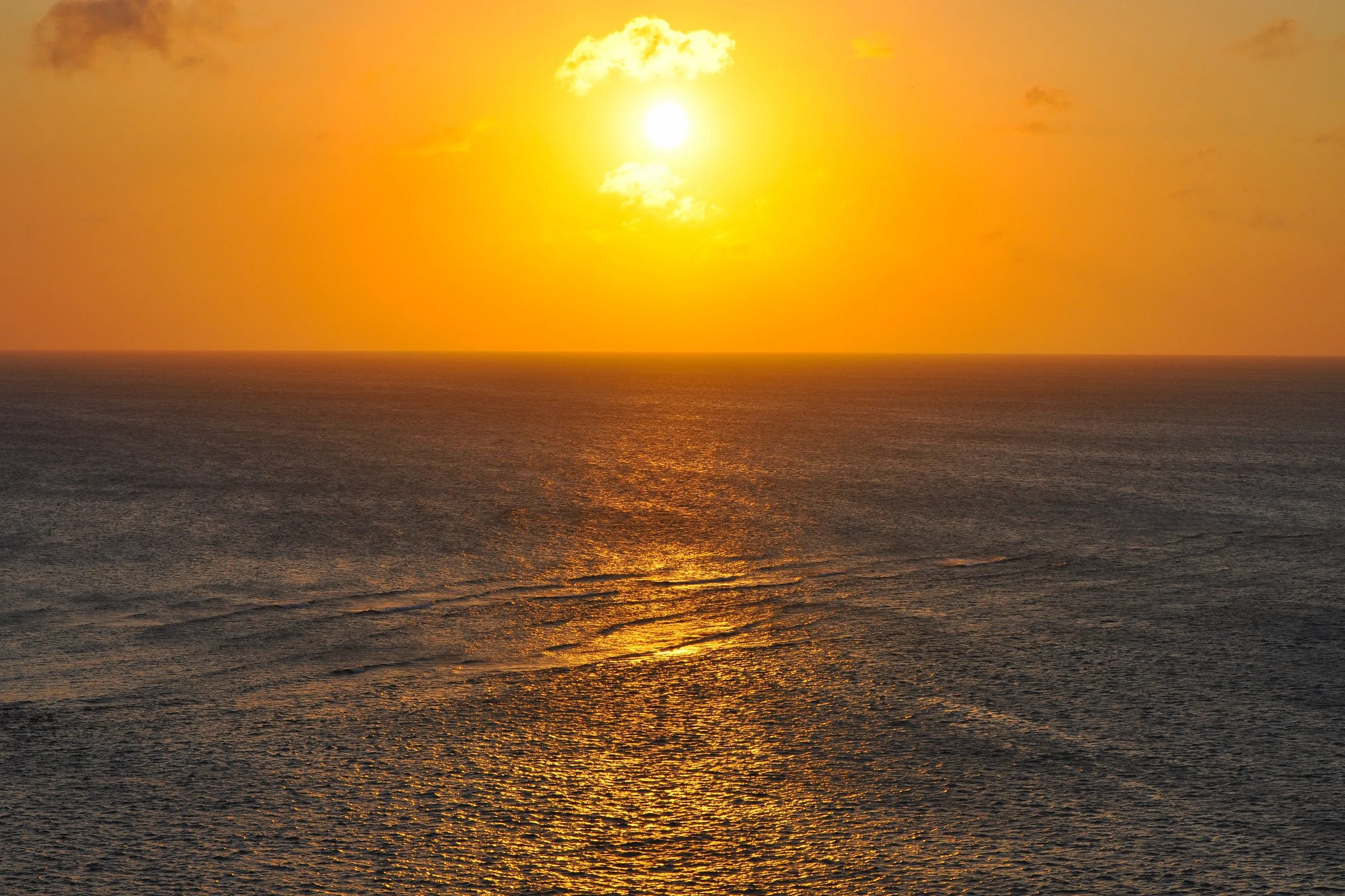The ABC Islands: exploring history, colors, and Caribbean seas
Follow our Caribbean cruise route to the ABC Islands. From the excitement of setting sail to the anticipation of each stop, this journey explores the history, culture, and beauty of Aruba, Bonaire, and Curaçao, three gems of the Dutch Antilles.
Angela: where are we going this time?
Piero: no van this time, we’re setting off by ship! We’re about to explore the ABC Islands.
Angela: want to play around with the alphabet?
Piero: not at all! I’m talking about the three Caribbean gems just a few kilometers off the coast of Venezuela: Aruba, Bonaire, and Curaçao.
Angela: three islands so close, yet so different. They share the bluest seas in the Caribbean, white sandy beaches, and a past that tells of centuries of conquest, trade, and blended cultures.
Piero: they are part of the Dutch Antilles, but each has its own soul. On this cruise, we’ll have one day for each island. A short time, but enough to fall in love.
Angela: and to tell their story, which goes far back: from the Arawak natives to the Spanish conquistadors, and then the Dutch, who left a deep mark on the language, architecture, and way of life.
Aruba: one happy island
Welcome to Aruba, the liveliest of the three islands. White sand, turquoise sea, and colorful houses meet a rich past of Arawak roots, Spanish and Dutch influences, and modern tourism. Explore Eagle Beach, Palm Beach, Arikok National Park, the Ayo rock formations, and the charm of the ‘One Happy Island.’
Angela: as the ship docks at the port of Oranjestad, we are immediately greeted by an explosion of colors: pink façades, lemon yellow, pastel blue. The houses look like they came from a Dutch neighborhood, yet are bathed in the dazzling light of the Caribbean.
Piero: the island of Aruba is the smallest of the three sisters, yet also the liveliest and most cosmopolitan. It lies just 25 kilometers from the coast of Venezuela, yet it is part of the Kingdom of the Netherlands. This combination can be felt everywhere: in the language, the flavors, the faces.
Angela: its history runs deep. The first inhabitants were the Caquetío, a branch of the Arawak people, who lived off fishing and agriculture. When the Spanish explorer Alonso de Ojeda arrived in 1499, the island came under Spanish rule. But with no gold or plantations, it was soon called “Isla Inútil”.
Piero: despite this harsh judgment, Aruba found its destiny. By the mid-17th century, the Dutch arrived, making it a strategic base and a stopover for trade routes. In the following centuries, its geographic position proved valuable: close to South America but politically stable, a safe harbor in the heart of the Caribbean.
Angela: the 20th century brought a turning point. The Americans built an oil refinery to process Venezuelan crude, and Oranjestad became a small industrial center. But from the 1980s, Aruba changed again, focusing entirely on tourism. Today it is one of the world’s most beloved destinations, with perfect weather and dreamlike beaches.
Piero: we begin our day at one of these beaches: Eagle Beach, one of the most beautiful in the Caribbean, with powdery white sand and turquoise waters fading into countless shades. The divi-divi trees, bent by the constant wind, are the island’s symbol and seem to point the way to a smile.
Angela: the wind is a constant presence. It blows here all year round, but it’s gentle and fresh. It’s what makes Aruba perfect for windsurfing and kitesurfing, but also for those who just want to stroll with their feet in the water without feeling the oppressive heat.
Piero: we continue toward Palm Beach, the island’s most lively area, where resorts, restaurants, and small bars line the sand. It’s the perfect spot for those seeking some life and Caribbean music, but just a few kilometers away, you can rediscover the wild nature of Arikok National Park.
Angela: Arikok covers almost a fifth of the island and holds an unexpected landscape: volcanic rocks, giant cacti, and ancient caves with Arawak rock paintings, like Fontein Cave. Here you understand how Aruba differs from many other Caribbean islands: drier, rougher, yet more authentic.
Piero: inside the park, there are also natural pools like Conchi, nestled among lava rocks and reachable only by off-road vehicle. The water is clear and calm, protected from the ocean waves breaking just outside. It’s one of those places where time truly stands still.
Angela: just outside the park, we stop at the Ayo rock formations, a magical place that seems straight out of a geological tale. Huge diorite boulders, smoothed by wind and time, rise in the desert like natural sculptures. Some weigh tens of tons and balance perfectly on one another, creating arches and mysterious passageways.
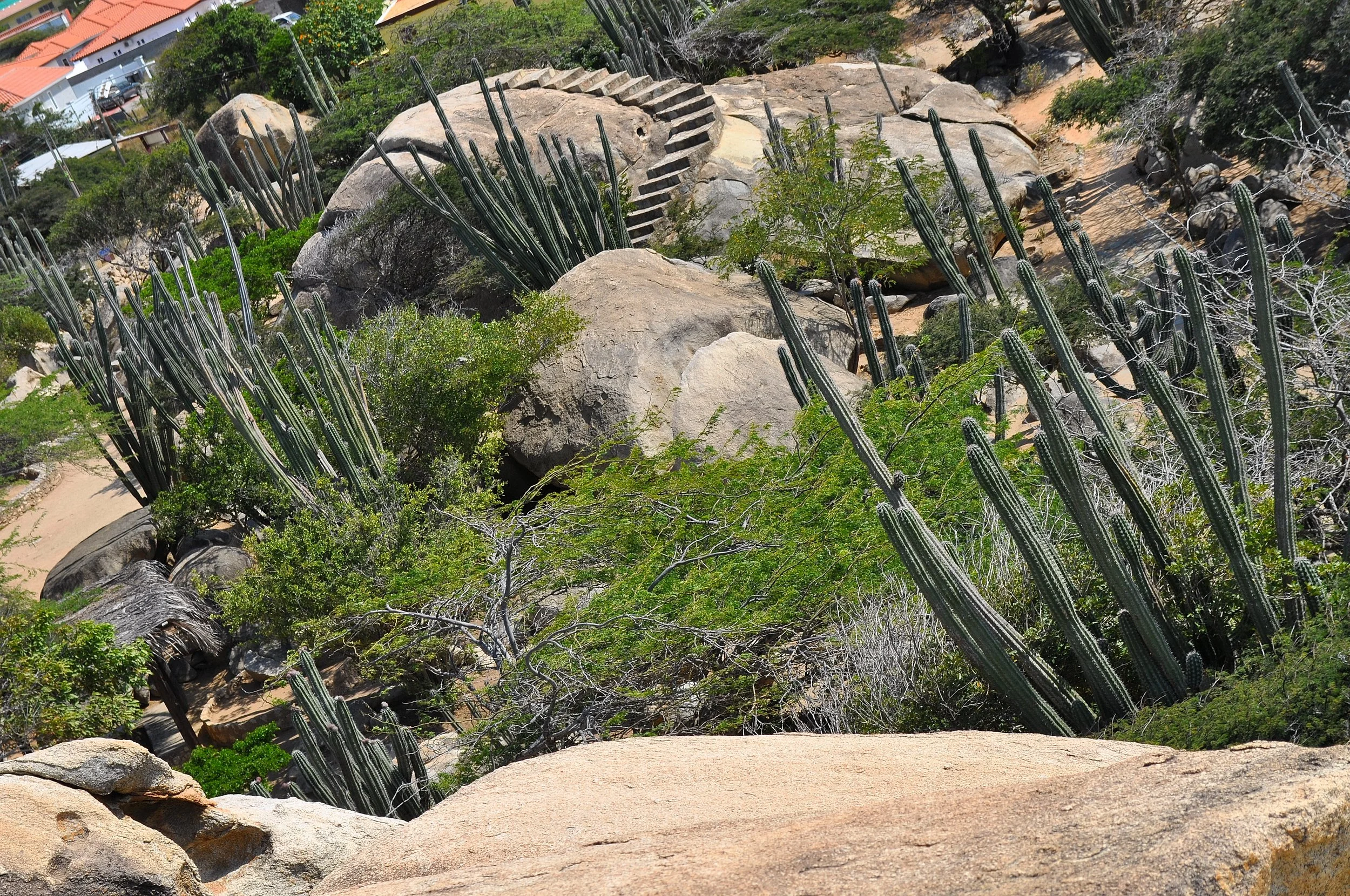


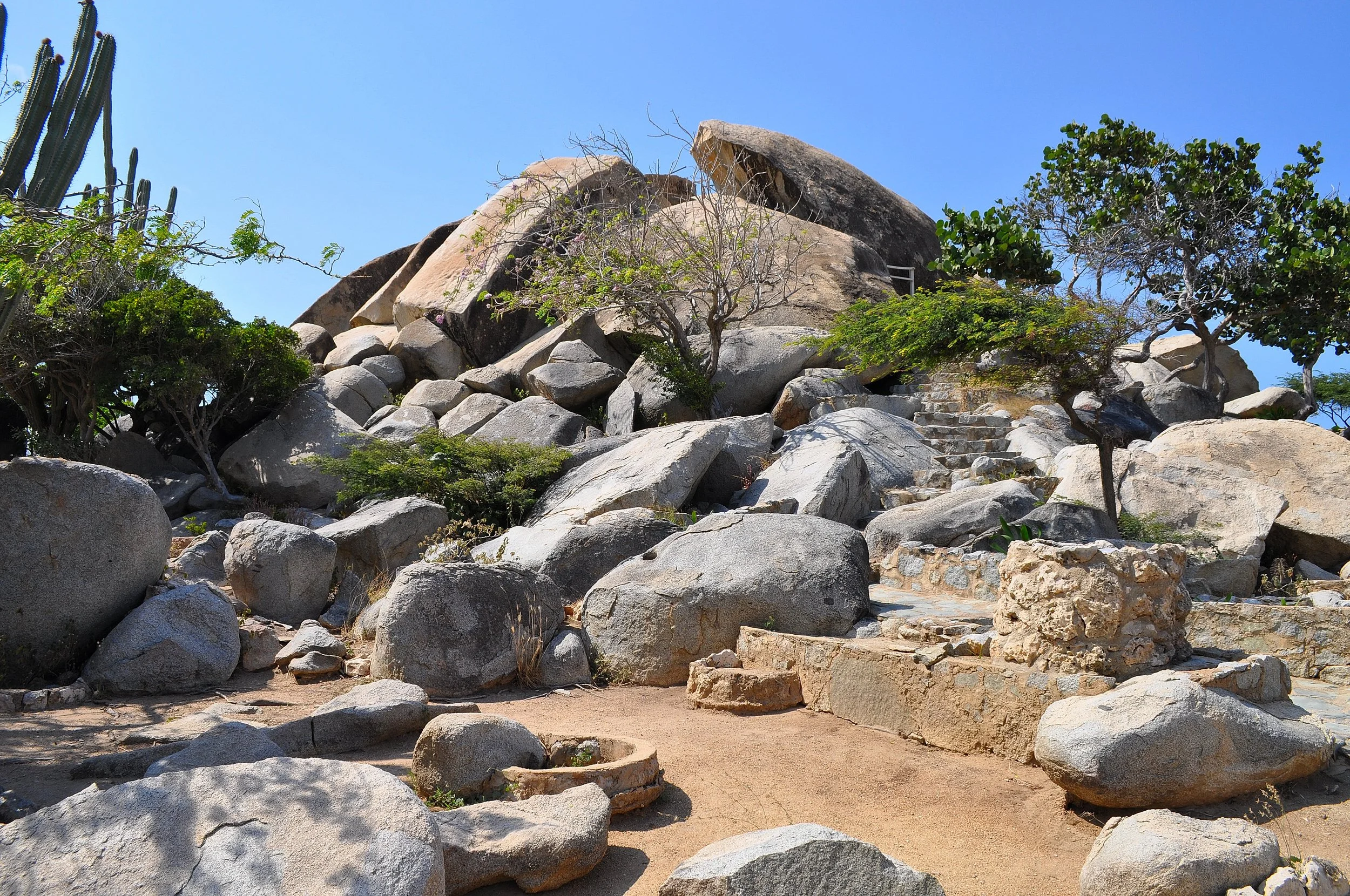





Piero: the ancient Arawak considered this site sacred: on the rocks, engravings and pictograms still remain today, testifying to rituals and ceremonies connected to nature and the sky. Walking among these silent boulders, surrounded by cacti and sunbathing lizards, gives a profound sense of peace.
Angela: we then head north to the California Lighthouse, built in 1910. From here, the view spans the entire island: the endless sea to the west and the arid hills to the east, with wind turbines turning slowly in the breeze.
Piero: not far away is the Alto Vista Chapel, built in 1750, the island’s first Catholic place of worship. It’s tiny, painted yellow, and surrounded by a desert of stones and cacti: a symbol of faith and resilience that reflects the simple spirituality of the Aruban people.
Angela: we spend the afternoon by the sea once again, this time at Baby Beach, a cove perfect for snorkeling, with shallow, calm waters that reflect the sky. Fish swim just inches from the shore, and time seems to stand still.
Piero: Aruba is “One Happy Island”, as its official motto says. But behind that smile lies a history of blending cultures, resilience, and openness to the world.
Angela: as the ship sets sail and the lights of Oranjestad fade, the island remains etched in our memory like a warm, luminous embrace. The wind continues to blow even when you can’t feel it, as if to say that here, happiness truly is in the air.
Bonaire: nature and tranquility
La tappa di Bonaire ci porta in un mondo tranquillo e autentico: natura selvaggia preservata, barriera corallina protetta dal 1979 e saline rosa con fenicotteri. Con dialogo e racconto esploriamo Kralendijk, Sorobon Beach, Klein Bonaire e il rispetto per l’ambiente che caratterizza questa isola delle Antille Olandesi.
Angela: the night passes peacefully on board as the ship sails through a deep blue stretch of sea. In the morning, Bonaire, the second island of our journey, appears before us.
Piero: it is the calmest and most authentic of the three, a place where nature still rules everything. Even from afar, you can see the rugged coastline and turquoise lagoons, home to flamingos and turtles.
Angela: the history of Bonaire begins long before the arrival of Europeans. The first inhabitants were the Arawak natives, who came from South America over a millennium ago. They left rock paintings in the Onima and Spelonk caves, still visible today.
Piero: then, in 1499, Alonso de Ojeda arrived here as well, the same explorer who reached Aruba. The Spaniards took possession, but finding neither gold nor valuable resources, the island was used mainly for grazing and timber collection.
Angela: by the mid-17th century, the Dutch arrived, turning it into a commercial base and, above all, a center for salt production. This activity deeply marked the island: even today, the large pink salt flats in the south are among Bonaire’s most iconic images.
Piero: and with them, unfortunately, comes the memory of slavery. African slaves worked in the salt flats under a relentless sun, sleeping in tiny stone houses that can still be visited today, restored as a testimony to the past.
Angela: today, Bonaire tells a completely different story. It is an extraordinary example of sustainable tourism, with special attention to protecting the sea. Already in 1979, the Bonaire National Marine Park was established, safeguarding the entire island’s coral reef: over 80 coral species and more than 400 types of tropical fish.
Piero: our day begins in Kralendijk, the small capital. The pastel-colored houses and relaxed atmosphere immediately give the impression of being in a village where time flows slowly.
Angela: we rent a jeep and head south along Pink Beach, where the sea shifts from turquoise to fuchsia. Then we reach the Pekelmeer salt flats, with thousands of flamingos walking in the shallow water.
Piero: the colors are unreal: the blue of the sky, the pink of the salt, and the dazzling white of the crystal mountains. Just a little further on, the Slave Huts, the small houses of the enslaved workers, recall the harshest part of the island’s history.
Angela: in the afternoon, we stop at Sorobon Beach, on Lac Bay, a protected lagoon perfect for windsurfing. Here the sea is shallow and calm, and the water feels as warm as a bath.
Piero: those who love snorkeling will find paradise: the corals are very close to the shore, and fish swim among the legs of bathers. It feels like being inside a natural aquarium.
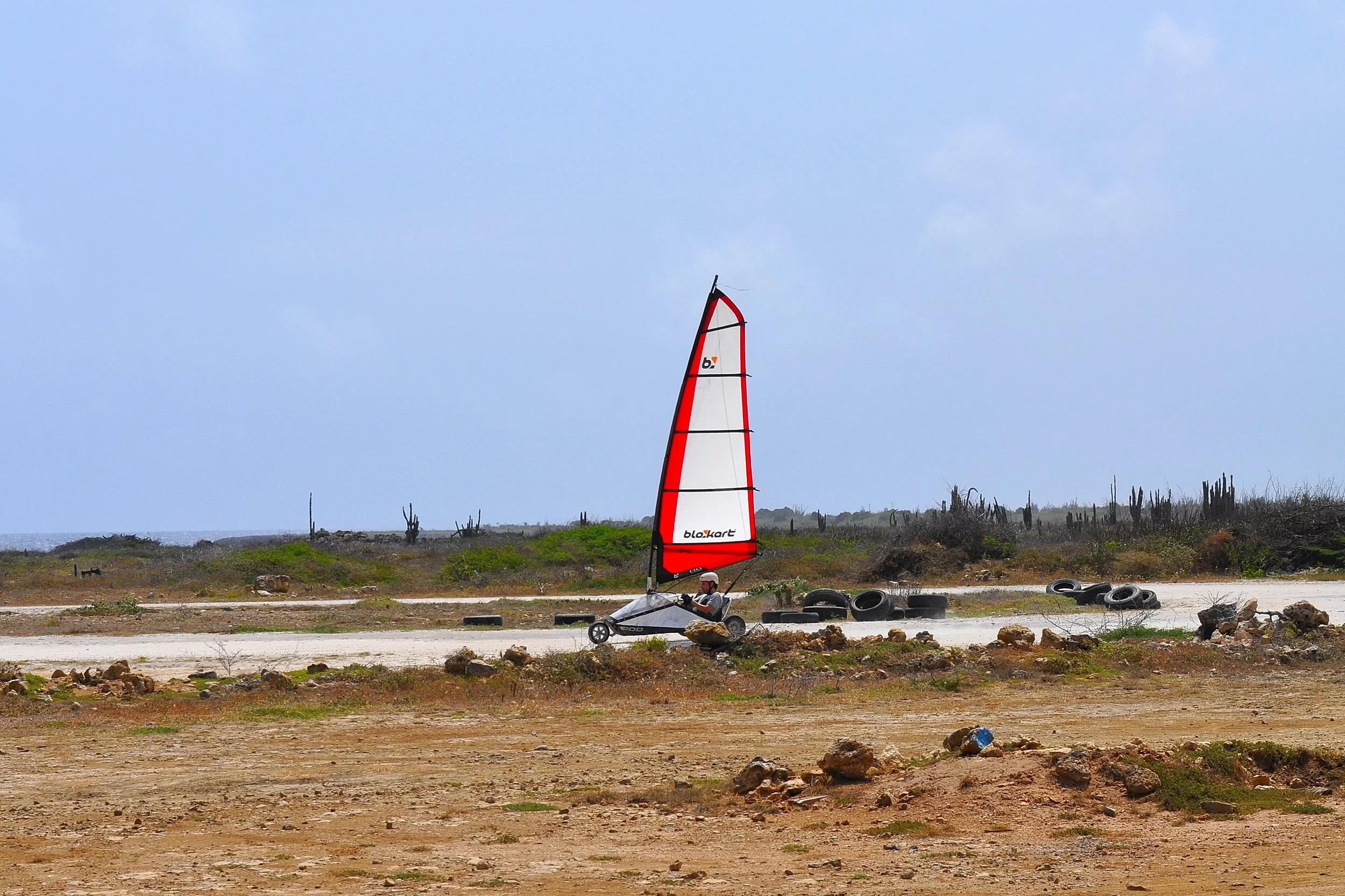

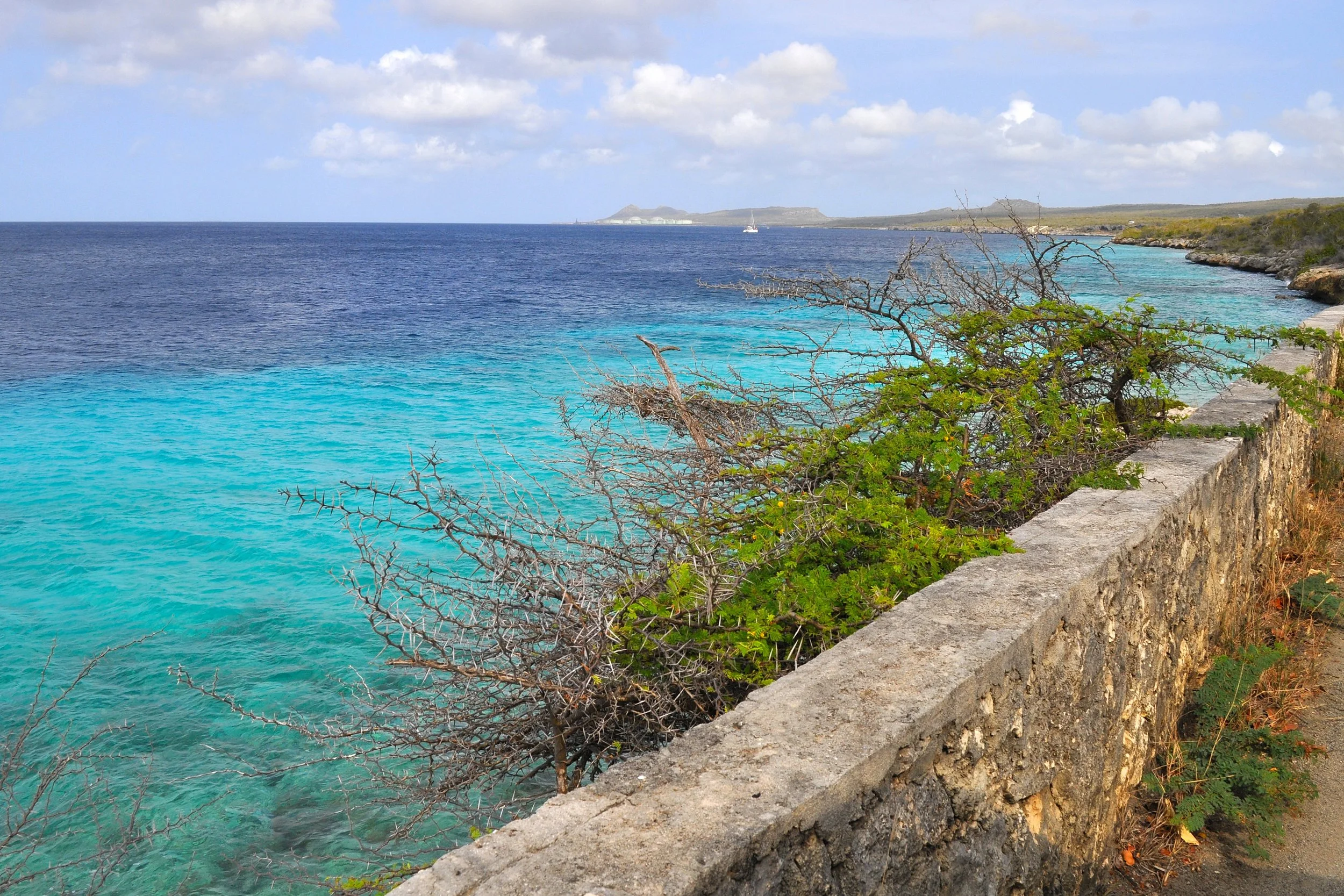







Angela: but the real jewel lies just offshore: Klein Bonaire, a small uninhabited island reachable by boat. It’s a protected reserve, with white sand and some of the most beautiful seabeds in the Caribbean.
Piero: towards evening, we return on board, our skin golden from the sun and our eyes full of images that won’t fade. Bonaire is an island that doesn’t try to impress, yet it does, with its simplicity and respect for nature.
Angela: it is the green heart of the Dutch Antilles, a place where humans and the sea coexist in harmony. And as the ship slowly sets off toward Curaçao, it’s easy to think that, in a world that rushes, islands like this still teach the value of slowing down.
Curaçao: the color of the Caribbean
Curaçao enchants with its brightly colored Dutch-style houses, creole papiamento language, and a past marked by trade and slavery. From the historic center of Willemstad to the Christoffel Park and the Hato Caves, each corner blends history, culture, and Caribbean beauty.
Angela: the sun rises as the ship enters the port of Willemstad, the capital of Curaçao. The pastel-colored houses reflecting on the water look like they’ve come straight out of a postcard — pink, yellow, sky blue, lime green. It’s as if the Netherlands had placed its architectural heart in the tropics.
Piero: Curaçao is the largest of the three islands, stretching about 60 kilometers in length. Its history is a mosaic of peoples and influences, just like the colors of its façades.
Angela: it all begins with the Arawak natives, who lived here for centuries before the arrival of the Europeans. Then, in 1499, the Spaniards led by Ojeda and Amerigo Vespucci landed on the island and added it to their colonial empire.
Piero: but in the 17th century, the Dutch arrived, conquered Curaçao, and turned it into one of the most important trading centers in the Caribbean. It became the base of the Dutch West India Company — a strategic hub for commerce and, unfortunately, for the African slave trade.
Angela: reminders of that period still stand today, like the imposing Fort Amsterdam, built in 1635 and now home to the governor, and the Otrobanda district, once inhabited by freed slaves.
Piero: over the centuries, the island became a crossroads of cultures — African, European, and South American. From this blend was born Papiamento, the local creole language, a mix of Dutch, Spanish, Portuguese, and African words.
Angela: but Curaçao is not just about history. It’s also about art, music, and color. Willemstad is a small urban gem, recognized as a UNESCO World Heritage Site. Walking along the Queen Emma Bridge, the floating bridge that connects the districts of Punda and Otrobanda, is a unique experience — it opens and closes to let ships pass, like a great curtain rising over the sea.
Piero: Punda is the colonial heart of the city: narrow streets full of shops, squares with local markets, and Dutch-style buildings painted in vibrant colors. Handelskade, the row of houses along the canal, is the island’s most iconic image.



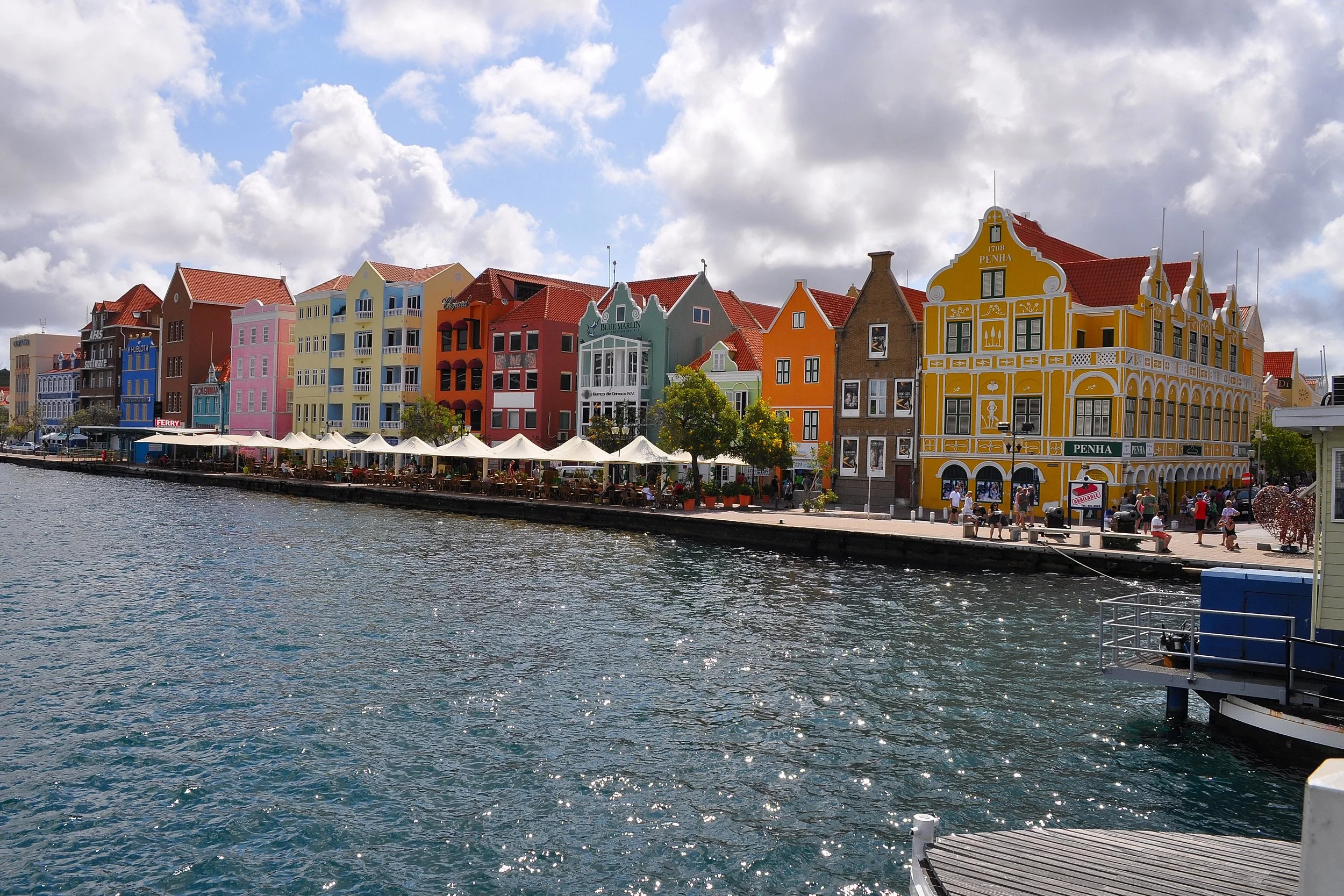


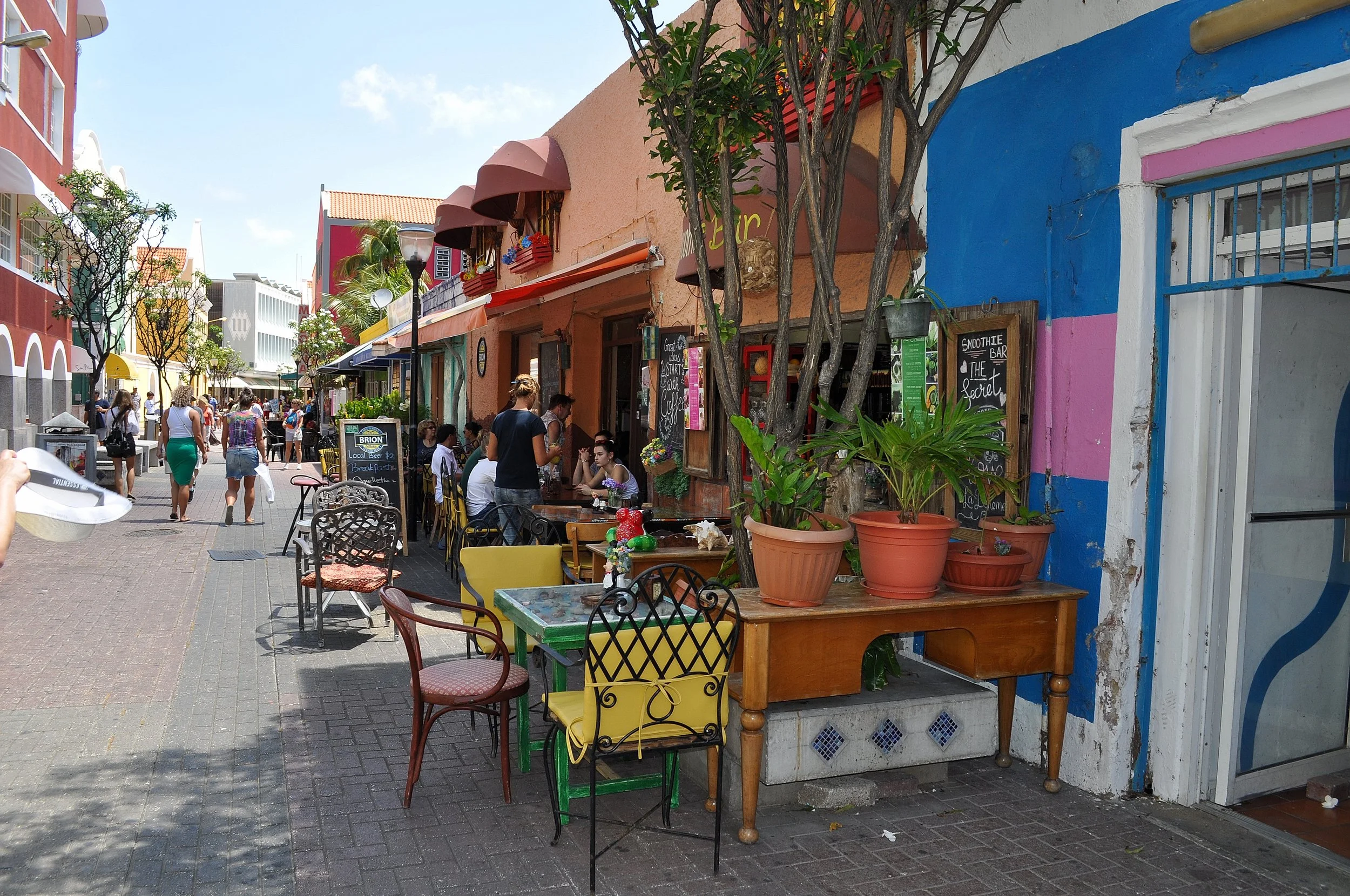

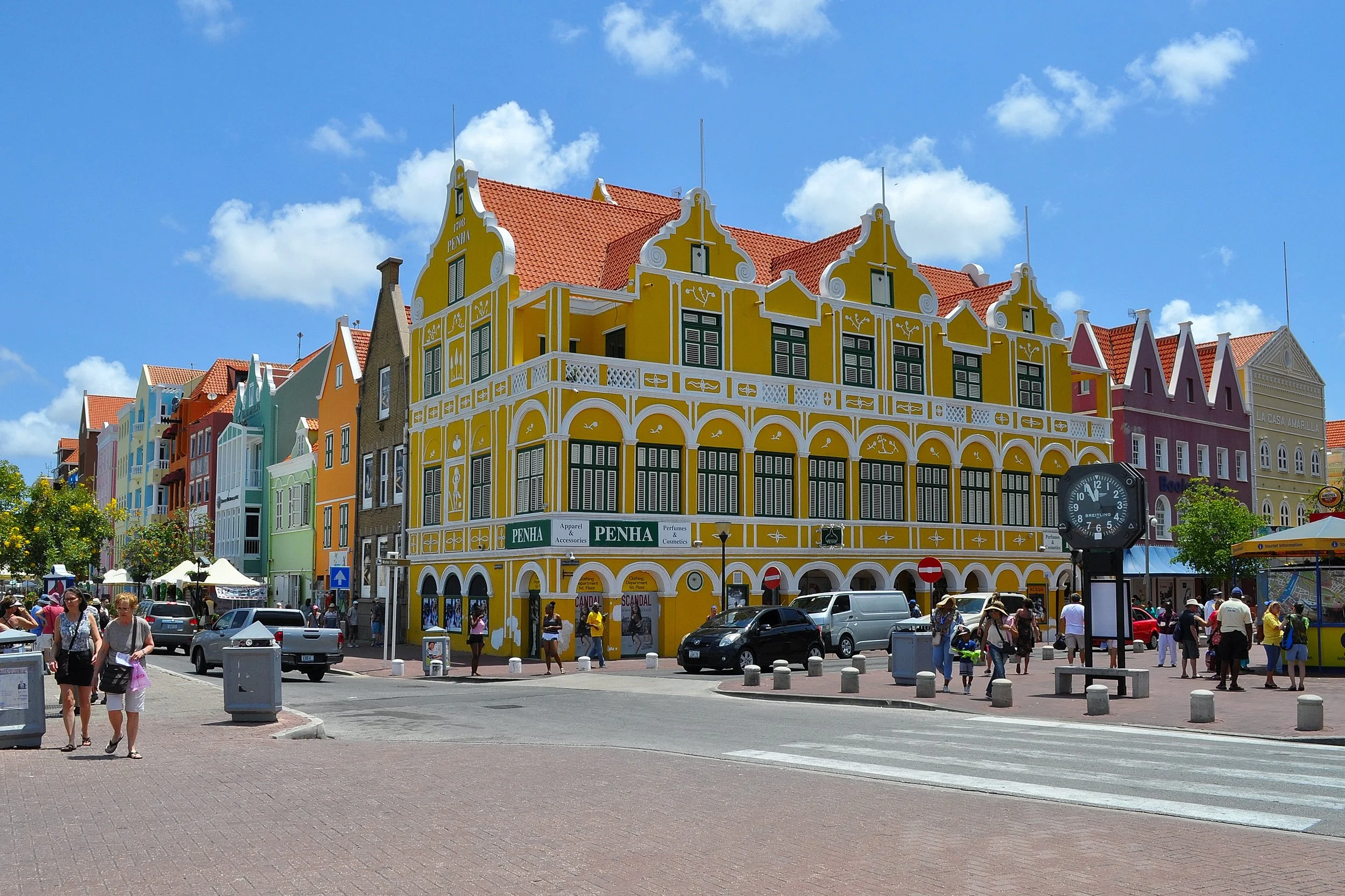

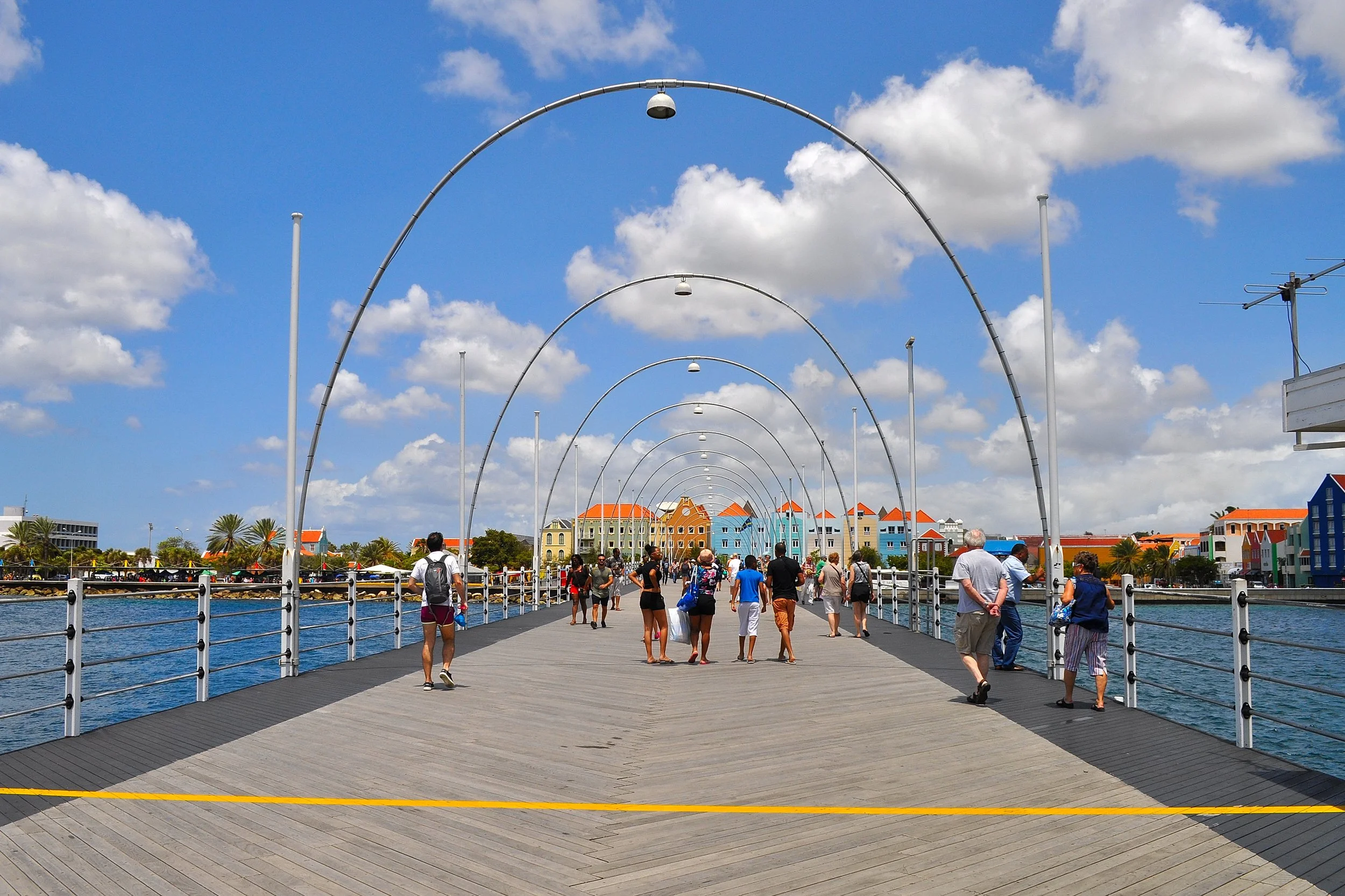
Angela: we stop at the Floating Market, where boats from Venezuela sell fresh fruit and fish directly from the water. It’s a place where you can feel the authentic soul of the Caribbean, full of scents and smiles.
Piero: in the afternoon, we leave the city to explore the island’s natural side. We reach Christoffel National Park, where hills rise up to 375 meters and cacti alternate with baobabs and wild orchids. From the top of Mount Christoffel, the view over the island is spectacular.
Angela: on the way back, we stop at the Hato Caves, rich with stalactites and ancient Arawak graffiti. Then, inevitably, we end up at the sea: Playa Kenepa Grandi, one of the most famous beaches, with waters of an almost unreal blue.
Piero: Curaçao is also a symbol of creativity. Local artists decorate walls with vibrant murals, and even the bottles of the famous blue liqueur — the legendary Blue Curaçao — seem to capture the color of the sea.
Angela: in the evening, when the lights of Willemstad reflect on the water, everything becomes magical. The city seems to dance, as if telling its long history with a sweet and cheerful melody. Discover more in this video:
Piero: each island has shown us a different face of the Caribbean. Aruba with its energy and endless beaches, Bonaire with its protected nature and the quiet of the sea, Curaçao with its culture, colors, and lively spirit.
Angela: three sisters united by transparent waters and a shared history, yet each with a distinct personality. Together, they form the heart of the Dutch Antilles, an archipelago where Europe meets America, nature meets history, past meets future.
Piero: traveling through these islands is like crossing three different worlds that perfectly complement each other.
Angela: and as the ship sets course northward, we realize that what remains is not just the beauty of the sea, but the feeling of having touched a place where life flows slower, smiles come naturally, and every sunset feels like a farewell.
Piero: the sea closes behind us, but the ABC Islands stay within us, like three bright points in the middle of the ocean, ready to remind us that happiness is sometimes made only of light, wind, and horizon.

